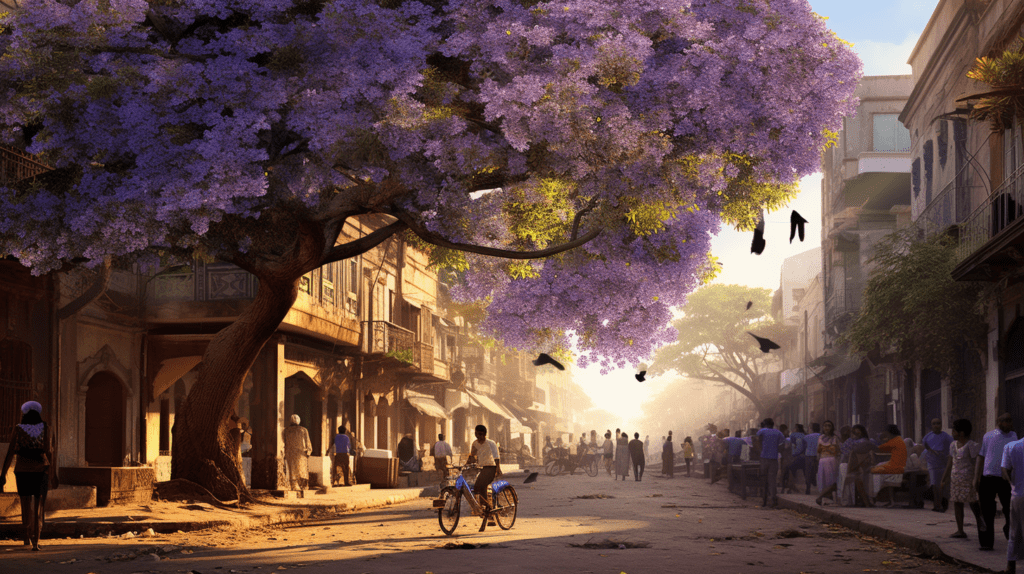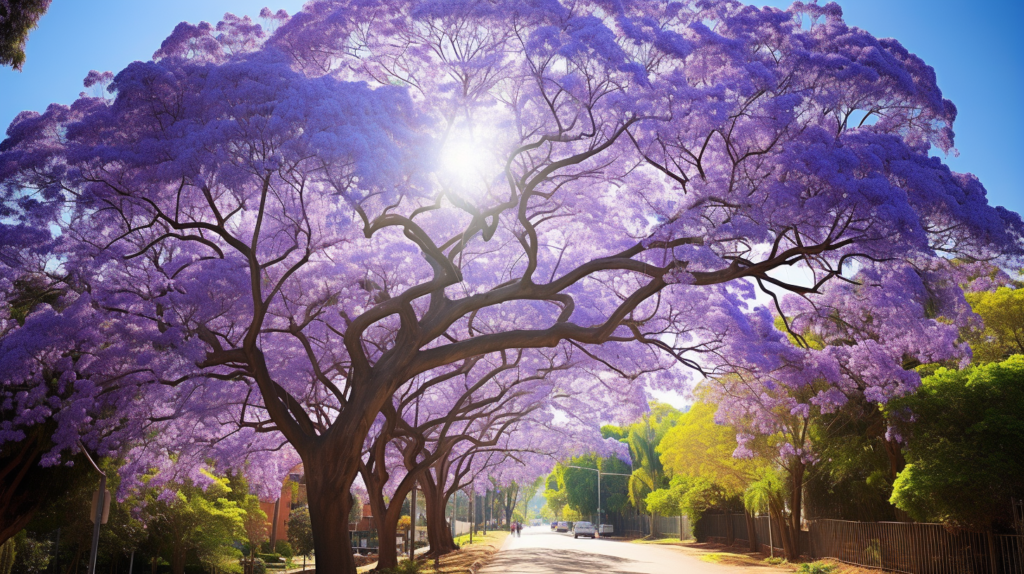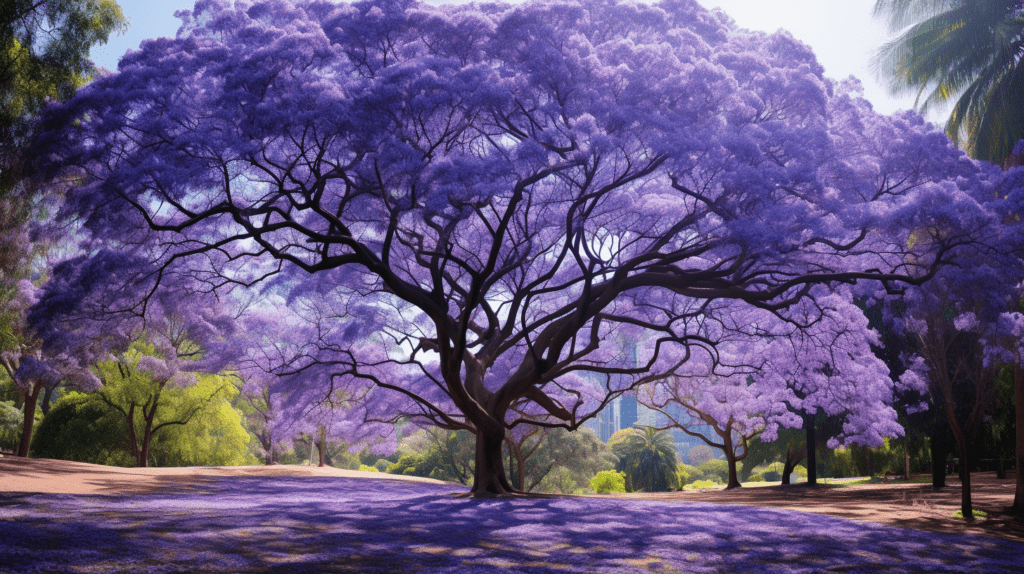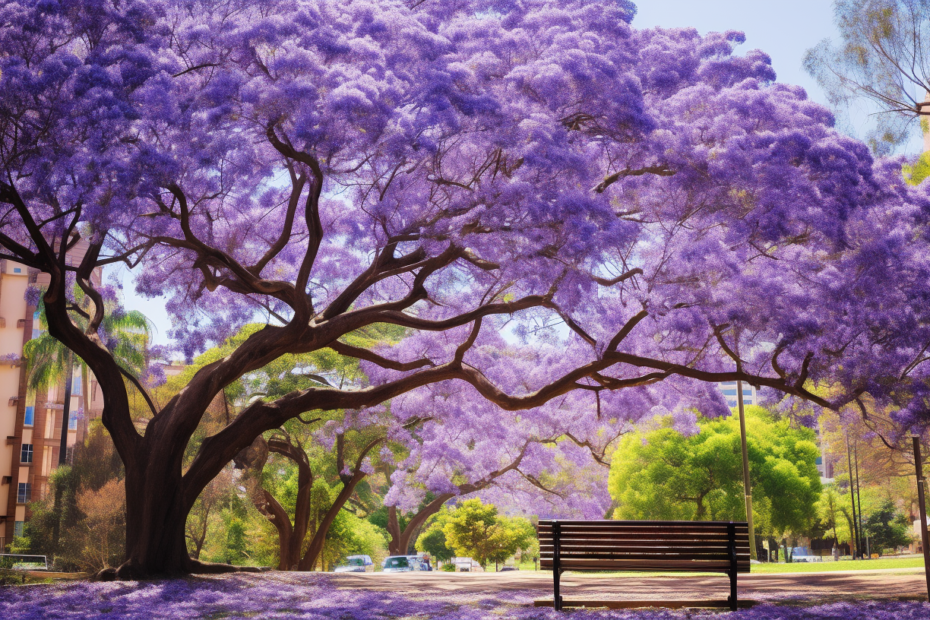Video: What are jacaranda trees: nature’s lavish purple-blue flowering showstopper
(Directly playing the video will automatically display subtitles in your language. If the subtitles are not in your language, you can go to Youtube to use the subtitle function.
If you like my content, you can also subscribe for more.
- Historical and Biological Significance:The Jacaranda tree originated from South America and became globally popular in the 19th century.
- Cultural and Ecological Impact:The tree symbolizes wisdom, rebirth, and wealth, and holds cultural, ecological, and practical value in various regions.
- Planting and Growth:Thriving in subtropical regions, the Jacaranda prefers well-draining soil, moderate water, and full sunlight.
The Jacaranda tree, with its ethereal purple blooms, stands as one of the most enchanting sights in subtropical landscapes. Often referred to as the “purple tree,” its vivid blossoms signal the beginning of warmer months in many parts of the world. But the Jacaranda’s beauty is more than just skin deep. This article delves into the history, cultural significance, and ecological value of the Jacaranda tree.
Historical Roots of Jacaranda Trees

Originating from South America, particularly Brazil, Argentina, and Bolivia, the Jacaranda tree belongs to the family Bignoniaceae. It was introduced to various parts of the world during the 19th century, where it quickly captured the imaginations and hearts of horticulturalists and garden enthusiasts alike.
Species and Characteristics of Jacaranda Trees

There are about 49 species of Jacaranda, but the most common and widely recognized is Jacaranda mimosifolia. This species is known for its fern-like leaves and large clusters of trumpet-shaped, lavender-blue flowers.
The Jacaranda tree typically grows between 20 to 40 feet, though in some optimal conditions it can reach up to 50 feet. It possesses a relatively smooth, grayish-brown bark. The fern-like, bipinnate leaves give the tree a delicate, lacy appearance, contrasting beautifully with the robust, vibrant blooms.
Blooming Period of Jacaranda Trees
One of the most anticipated events in places like Australia, South Africa, and parts of the U.S. like California and Florida is the blooming of the Jacaranda trees. Usually between late spring and early summer, streets and parks are carpeted in a sea of purple. It’s said that if the Jacaranda tree is blooming, students should start preparing for their exams, leading to the tree’s nickname in some regions as the “exam tree”.
Jacaranda Trees’ Ecological Significance
Beyond its ornamental value, the Jacaranda tree offers ecological benefits. Its dense canopy provides shade, making it a preferred choice for urban landscaping. The flowers, while primarily ornamental, attract pollinators, and its foliage serves as food for caterpillars of certain butterfly species.
Cultural Impact and Uses

The Jacaranda tree has deeply entrenched itself in the cultures of the regions where it thrives. In various parts of the world, festivals celebrate the blooming of these trees, marking the change of seasons and the cyclical nature of life.
The wood of the Jacaranda tree, being hard and durable, is used in making furniture, while its bark has traditional medicinal uses in some cultures.
The Jacaranda tree, with its breathtaking purple blossoms, often symbolizes wisdom, rebirth, and wealth. In many cultures, the tree’s annual blooming is seen as a sign of the approaching warmer months and, in some places like Australia, an indicator that students should begin preparing for exams. Its vibrant, carpet-like purple bloom is also seen as a representation of creativity and imagination. The tree’s ephemeral flowering period, where streets are momentarily awash with color, serves as a poetic reminder of life’s fleeting moments of beauty.
Growing the Jacaranda Tree

Where does the Jacaranda tree grow?
The Jacaranda tree is native to the subtropical regions of South America, including Brazil, Argentina, and Bolivia. However, its ethereal beauty and adaptability have led to its introduction in various parts of the world. Today, you can find Jacaranda trees gracing the landscapes of Australia, South Africa, parts of Asia, and in U.S. states such as California and Florida. It thrives in regions with warm climates and can tolerate mild frost, but not prolonged freezing conditions.
How to plant Jacaranda seeds?
Planting Jacaranda seeds requires a bit of preparation. Start by soaking the seeds in warm water for 24 hours to soften the outer shell. After soaking, fill a seed tray or pots with a well-draining seed mix. Place the seeds on the surface and lightly cover them with the mix. Water gently to ensure the soil is moist but not soggy. Place the tray or pots in a warm, bright location but out of direct sunlight. Keep the soil consistently moist. Germination usually occurs within a few weeks. Once the seedlings have grown a couple of inches and have at least two sets of true leaves, they can be transplanted to a larger pot or directly to the ground if the climate permits.
If you’re considering adding this mesmerizing tree to your landscape, here are some tips:
-
- Soil: Jacarandas prefer well-draining soil. While they can tolerate a variety of soil types, avoiding waterlogged conditions is crucial.
- Watering: These trees have moderate water needs. Once established, they can tolerate short dry spells.
- Sunlight: Plant your Jacaranda in a location where it can get full sun, ensuring optimal growth and profuse blooming.
- Pruning: While the tree has a naturally good shape, occasional pruning can help manage its size and remove any dead or weak branches.
How tall do Jacaranda trees grow?
Typically, a mature Jacaranda tree reaches heights between 20 to 40 feet. However, in environments where conditions are favorable, some Jacaranda trees have been known to soar up to 50 feet tall. They usually possess a broad, spreading canopy which can be almost as wide as the tree is tall, giving it a majestic appearance when in full bloom.
The Jacaranda tree, with its stunning display of purple blossoms, not only beautifies our landscapes but also enriches our cultures and ecosystems. Whether you’re basking in its shade or admiring it from afar, the Jacaranda serves as a reminder of nature’s incredible capacity for beauty and renewal.
